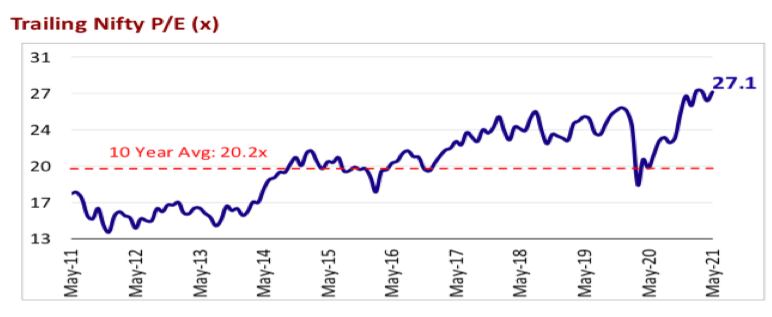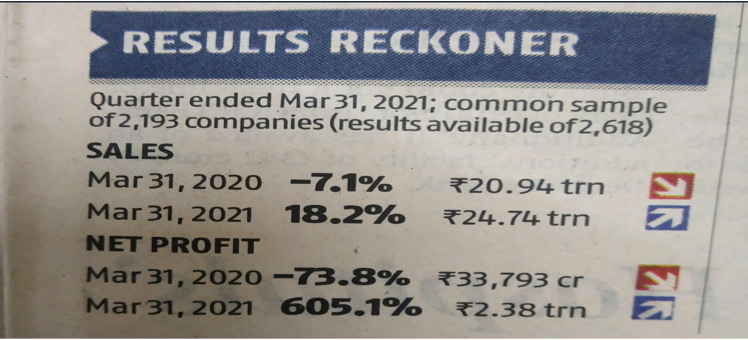(1) Trailing EPS
(2) Forward EPS
(3) Trailing PE
(4) Forward PE
Formula
EPS = Profit After Tax / Number of outstanding Shares
PE = Market Price / EPS (2/n)





Here\u2019s a compilation of Personal Finance threads I have written so far. Thank you for motivating me to do it.
— Kirtan A Shah (@kirtan0810) December 13, 2020
Hit the 're-tweet' and help us educated more investors
Yes Bank\u2019s additional Tier 1 bonds, written off. Lakshmi Villas Banks Tier 2 bonds, written off. Understand what & why of ATI and Tier 2 bonds in this thread.
— Kirtan A Shah (@KirtanShahCFP) December 4, 2020
Do \u2018re-tweet\u2019 and help us benefit more investors (1/n)
'Floating Rate Funds' - A case for debt investing in the current interest rate situation (A Thread)
— Kirtan A Shah (@KirtanShahCFP) November 27, 2020
You should not miss this if you invest in Debt.
Do \u2018re-tweet\u2019 & help us benefit more investors (1/n)
Fixed Income investment strategies (Thread)
— Kirtan A Shah (@KirtanShahCFP) November 20, 2020
Do 're-tweet' & help us reach & benefit investors
It\u2019s a misconception that FD, RBI Bond, PPF etc have no risk. The reason we don\u2019t see the risk in them is because for us, risk ONLY means loss of capital. (1/n)
Index Funds v/s ETFs
— Kirtan A Shah (@KirtanShahCFP) November 17, 2020
Do 're-tweet' so that we can reach a larger audience :)
(Thread)
(1) While index funds and ETF\u2019s look similar, there are multiple differences you need to keep in mind before investing in either of them. Let me highlight the important ones (1/n)

Market PE at 40 and yet the market is not falling, why? Getting asked this question multiple times. Here's a thread covering \u2018very basic\u2019 premier on valuation for my retail investor friends.
— Kirtan A Shah (@KirtanShahCFP) January 14, 2021
Do hit the \u2018re-tweet\u2019 and help us educate more investors (1/n) pic.twitter.com/8oCkBmmOXY

It's the weekend!
— Tar \u26a1 (@itsTarH) May 15, 2021
Grab a cup of coffee, in this thread I will explain
1. What a cash flow statement is?
2. What does it tell you about a business?
3. How to analyze one?
Examples included various Indian companies.
Let's dive right in. pic.twitter.com/c8tNP26Z8K
Its the weekend!
— Tar \u26a1 (@itsTarH) May 22, 2021
Grab a cup of coffee, in this thread I will explain
1. What is Capex?\U0001f4b0
2. What is Free Cash Flow? \U0001f4b8
3. What does Cash Flow from Investing and Cash Flow from Financing tells us? \U0001f4a1
Examples includes some famous companies.
Lets dive right in. pic.twitter.com/HDJgUvE8f8
Its the weekend!
— Tar \u26a1 (@itsTarH) May 29, 2021
Grab a cup of coffee, in this thread I will explain
1. How to select a Mutual Fund?
2. Common and costly mistakes people make while choosing a Mutual Fund
3. Some tools and tips to help you while selecting a fund
Lets dive right in. pic.twitter.com/teelsojtn9
Laurus Labs : A Visual Story
— Tar \u26a1 (@itsTarH) May 30, 2021
I am a Data Science / Machine Learning developer by profession and data along with finance are my two areas of competence.
I realize how powerful combining both of them can be, so here is a visual analysis for Laurus Labs.
Ok I couldn't resist myself...
— 0x_Infinitum (@CryptoMessiah) February 3, 2021
OOOONNEEE more $Rook post.
Before i get into the REALLY cool shit i want to talk about, let me discuss the arb mining mechanics that were present during the initial distribution phase.
See this image, that's the keeperdao treasury.
1/ pic.twitter.com/Z2sMsZN9jo